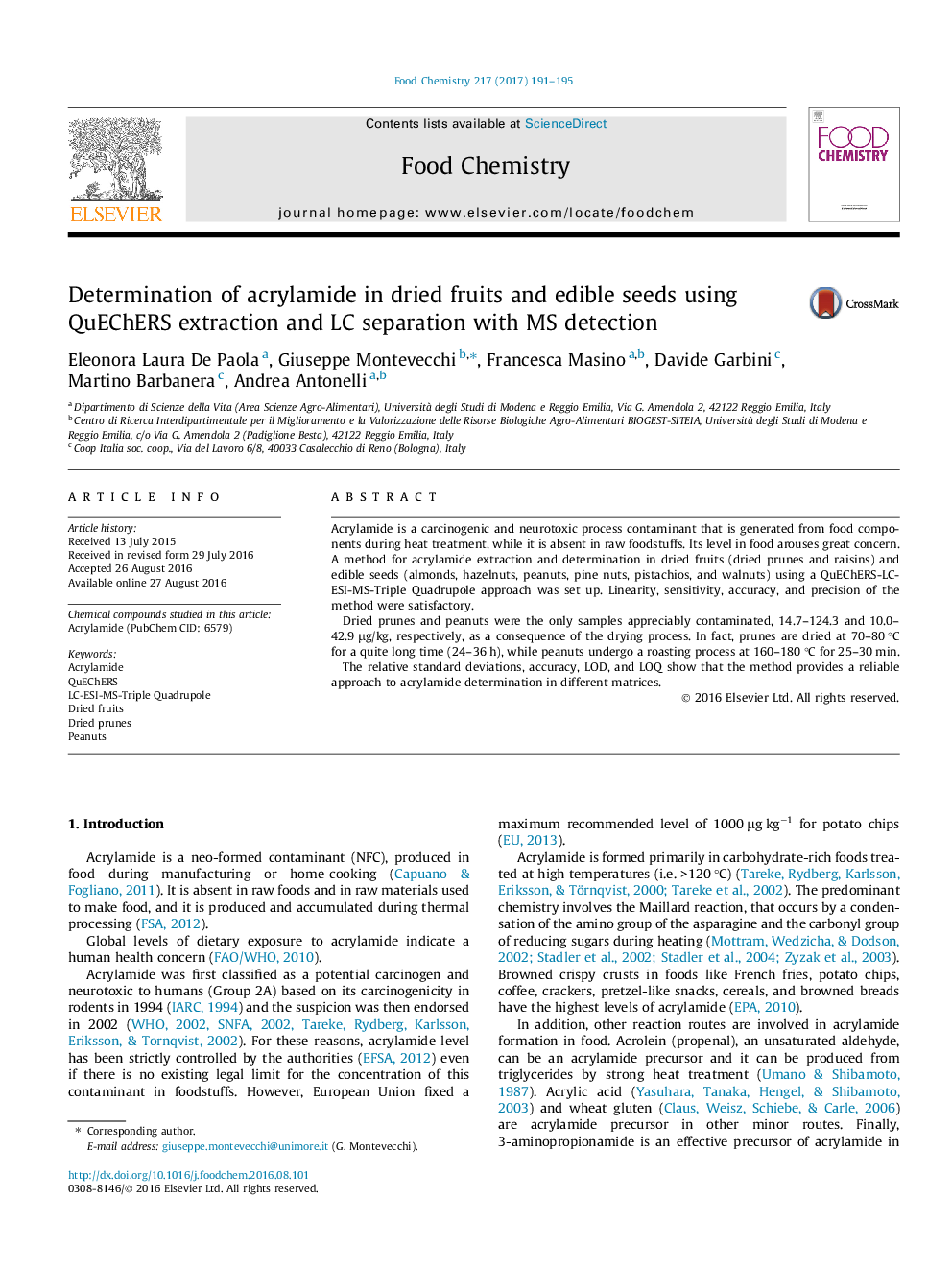| Article ID | Journal | Published Year | Pages | File Type |
|---|---|---|---|---|
| 1184747 | Food Chemistry | 2017 | 5 Pages |
•Acrylamide, a toxic process contaminant generated during heat treatment of food.•QuEChERS approach was for the first time optimized for dried fruits and edible seeds.•68 samples of dried fruits and edible seeds purchased on Italian market were tested.•Method linearity, sensitivity, matrix effect, accuracy, and precision were evaluated.•Dried prunes and peanuts were the only samples contaminated with acrylamide.
Acrylamide is a carcinogenic and neurotoxic process contaminant that is generated from food components during heat treatment, while it is absent in raw foodstuffs. Its level in food arouses great concern. A method for acrylamide extraction and determination in dried fruits (dried prunes and raisins) and edible seeds (almonds, hazelnuts, peanuts, pine nuts, pistachios, and walnuts) using a QuEChERS-LC-ESI-MS-Triple Quadrupole approach was set up. Linearity, sensitivity, accuracy, and precision of the method were satisfactory.Dried prunes and peanuts were the only samples appreciably contaminated, 14.7–124.3 and 10.0–42.9 μg/kg, respectively, as a consequence of the drying process. In fact, prunes are dried at 70–80 °C for a quite long time (24–36 h), while peanuts undergo a roasting process at 160–180 °C for 25–30 min.The relative standard deviations, accuracy, LOD, and LOQ show that the method provides a reliable approach to acrylamide determination in different matrices.
